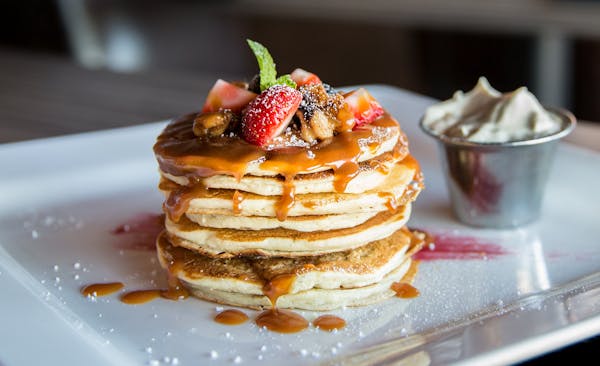Table of Contents
ToggleRash Around Your Child’s Mouth Food Allergy: Could It Be From What They Eat?
Seeing a red, bumpy rash around your child’s mouth can be upsetting. You worry: Is it a virus, irritation, or something more serious? One often-overlooked cause is a food allergy. A mild reaction can show up as a perioral rash—small red bumps encircling the lips. In this article, we’ll explore how food allergies can cause a rash around your child’s mouth, what foods to watch, ways to diagnose, and proven treatments. Read on to learn simple, expert-backed tips to soothe your child’s skin and keep them safe.
What Is a Perioral (Mouth-Around) Rash?
A perioral rash appears around the lips and mouth. It can look dry, scaly, or filled with small red bumps. In children, this rash often shows up when the skin comes into contact with an allergen. The outer lip margin—the area from the chin up to the lower nose—gets red and itchy. Perioral rashes have many causes. In addition to food allergies, common triggers include:- Saliva irritation from drooling (especially in toddlers)
- Harsh toothpaste or flavored lip balm
- Chemical irritants in foods like citrus or tomato
- Contact dermatitis from certain fabrics or creams
- Red, itchy bumps (hives or wheals)
- Dry, cracked skin
- Mild swelling of the lips
- Burning or stinging sensation
Signs of a Rash Around Your Child’s Mouth Food Allergy
Recognizing the signs early helps you act fast. Here’s what to watch for:- Timing: Does the rash appear within minutes to hours after eating?
- Pattern: Is it strictly around the mouth, or more widespread?
- Associated Symptoms: Look for hives on the face, itching, or tummy upset.
- Trigger Foods: Link the rash to nuts, dairy, eggs, or other common allergens.
- Recurrence: Does eating the same food cause the rash again?
Common Food Allergens Leading to a Mouth Rash
Certain foods are more likely to cause a rash around the mouth in kids. Below is a quick overview:| Allergen | Common Foods | Reaction Type |
|---|---|---|
| Peanuts | Peanut butter, granola bars | Hives, swelling |
| Tree Nuts | Almonds, walnuts, cashews | Itchy rash, eczema flare |
| Dairy | Milk, cheese, yogurt | Crumbling lips, eczema |
| Eggs | Egg yolk, whites, baked goods | Perioral dermatitis |
| Wheat/Gluten | Bread, pasta, cereals | Dry, scaly rash |
| Citrus Fruits | Oranges, lemons, limes | Contact dermatitis |
Diagnosing Food Allergy-Related Mouth Rashes
When a rash around your child’s mouth food allergy seems likely, follow these steps to diagnose:- Food Diary: Log all foods and rash times over one to two weeks.
- Elimination Diet: Remove suspect foods from the diet for 2–4 weeks.
- Reintroduction: Add one food back at a time and watch for reactions.
- Allergy Testing: Visit an allergist for skin prick tests or blood IgE tests.
- Oral Food Challenge: Done under medical supervision to confirm diagnosis.
Effective Treatments for Rash Around Mouth Food Allergy
Once you identify the allergen, these treatments can help clear up the rash and ease discomfort:- Topical Emollients: Apply a gentle moisturizer (fragrance-free) 2–3 times daily to soothe dryness.
- Mild Topical Steroids: A low-dose hydrocortisone cream can reduce redness. Use under doctor advice.
- Oral Antihistamines: Children’s diphenhydramine or cetirizine eases itching (follow dosing instructions).
- Avoid Scratching: Keep nails trimmed. Use soft mittens if needed to stop picking.
- Cool Compresses: Apply a damp, cool towel for 5–10 minutes to calm inflamed skin.

Preventing Food Allergic Reactions Around the Mouth
Prevention is key to keeping that rash from returning around your child’s mouth. Follow these simple steps:- Introduce Foods Early: Offer common allergens (peanut, egg) by 6–12 months unless contraindicated.
- Read Labels Carefully: Watch for hidden dairy, soy, or nut traces in packaged foods.
- Separate Prep Areas: Use dedicated utensils and cutting boards for allergen-free meals.
- Educate Caregivers: Share allergy lists with teachers, babysitters, and relatives.
- Carry Emergency Medicine: Keep antihistamine or epinephrine auto-injector on hand if prescribed.
Pro Tip: Teach your child to say “I’m allergic” at the first sign of itching or tingling. Early communication can stop a mild rash from becoming a worse reaction.
When to Seek Professional Help for Food Allergy Rashes
Not every rash needs a doctor’s visit, but contact a healthcare provider if you see:- Rapid swelling of lips, tongue, or throat
- Difficulty breathing, wheezing, or coughing
- Widespread hives beyond the mouth area
- Severe stomach pain, vomiting, or diarrhea
- Fever over 100.4°F (38°C) accompanying the rash
FAQ: Food Allergy Rash Around Child’s Mouth
- What foods commonly cause a rash around a child’s mouth?
- Peanuts, tree nuts, dairy, eggs, wheat, and citrus are top culprits. Introducing foods one at a time helps spot the trigger.
- How soon after eating does a food allergy rash appear?
- Rashes can show up within minutes to a few hours. Immediate hives suggest an IgE reaction, while delayed eczema-like rash may take days.
- Can dairy cause a rash around the mouth in children?
- Yes. Milk proteins can trigger perioral dermatitis, eczema, or hives, especially when given in large amounts.
- How is a perioral rash different from eczema?
- Perioral rash centers on the mouth and often has small red bumps. Eczema can appear on cheeks, elbows, and behind knees, and is very dry and itchy.
- When should I suspect a food allergy in my child?
- Suspect it if rashes recur after eating the same food, or if you see hives, swelling, or tummy upset along with the rash.
- Are home remedies effective for a food allergy rash?
- Moisturizers and cool compresses can ease symptoms, but remove the trigger food first. For persistent rash, see a doctor.
- What tests are used to diagnose food allergies in children?
- Skin prick tests, blood IgE antibody tests, and supervised oral food challenges are the main methods to confirm allergies.
Conclusion
A rash around your child’s mouth may look harmless, but it often signals a food allergy. By spotting signs early, keeping a food diary, and working with your pediatrician or allergist, you can identify triggers and ease your child’s discomfort. Use simple treatments, practice safe meal prep, and teach your child to communicate symptoms. Ready to protect your little one? Explore our Resources and reach out via our Contact Us page for personalized guidance.“Food Scan Genius helped me avoid hidden allergens and cleared my daughter’s rash in days!” – Emily, mom of a 4-year-oldTake action today by tracking meals, reading labels, and consulting an expert. Your child’s clear skin and happy smile depend on it!






24 Comments
[…] for emergencies by recognizing anaphylaxis symptoms and mastering auto-injector […]
[…] helpers. These apps warn us about allergens, helping us avoid bad reactions7. They can spot 2-16 food allergens, making them great allies in our fight against allergic […]
[…] over 32 million Americans managing allergies, it’s clear this isn’t a small issue. From peanut allergy scares to unexpected reactions, staying informed is key. The good news? You’re not alone, and […]
[…] studies focused primarily on children aged 4–17, showing up to 80% achieved desensitization after a year of treatment. Adult trials […]
[…] Peanut allergy remains one of the most prevalent and severe food allergies. […]
[…] report highlights one simple addition to prenatal diets that could reduce peanut allergy risk in children: eating peanuts. This finding stems from large-scale observational data indicating that mothers who […]
[…] those living with peanut allergies, the bean recall poses immediate and long-term concerns. Families must reassess home pantry items, […]
[…] with lactose intolerance or dairy allergies should proceed […]
[…] Reading an ingredient list for food allergies can feel overwhelming, considering the multitude of ingredients present. To simplify the process, start by focusing on the “contains” statement. This section, recommended by the Food Allergen Labeling Consumer Protection Act (FALCPA) of 2004, aims to identify the most common allergenic foods in plain language. For example, instead of simply stating “sodium caseinate,” a product label should say “sodium caseinate (milk)” to explicitly indicate the presence of milk protein. The recent FASTER Act of 2021 expands FALCPA to include sesame as a common food allergen. […]
[…] allergies affect approximately 1 in 13 children in the U.S. and more than 32 million Americans overall. These immune system responses occur when […]
[…] to the Whole30 diet. We hope you’re ready and excited to start your wellness journey. This elimination diet can change how you see food, boost your health, and teach you about your body’s […]
[…] the rules for food allergens is the first step. The Food Allergen Labeling and Consumer Protection Act makes it easier to spot […]
[…] makes us unique? We check over 24 food allergens, not just the usual 14. This means your safety is our main focus1. Say goodbye to guessing and […]
[…] are a leading cause of food allergy reactions in children. Estimates show up to 2.5% of U.S. children have a peanut allergy.^1 Reactions range from mild […]
[…] for young patients. Using cutting-edge immunotherapy techniques, researchers aim to desensitize children and reduce severe reactions. This article dives into the science, real-world impact, and practical […]
[…] symptoms often include hives, itching, or swelling around the mouth. More severe signs can be wheezing or […]
[…] Colors: Dyes such as Red 40 and Yellow 5 have been linked to hyperactivity in children and can provoke allergic-like reactions. The FDA regulates their […]
[…] with lactose intolerance or dairy allergies should proceed […]
[…] are a nutritious and affordable source of protein, healthy fats, and essential nutrients. However, peanut allergies are among the most common and severe food allergies worldwide. According to a 2023 study in the […]
[…] training in allergy prevention and emergency […]
[…] foods are now recognized as a significant contributor to the surge in chronic diseases among children, including obesity, type 2 diabetes, hypertension, and food […]
[…] Risk of Allergies and Intellectual Disability in Children with Early Antibiotic Exposure: Latest Research and Implications for Food […]
[…] to the CDC, food allergies affect about 1 in 13 children and over 32 million Americans, with numbers rising each year. Adults are increasingly being […]
[…] breathing, loss of consciousness). According to the CDC, food allergies affect approximately 8% of children and up to 4% of adults in the United States, with similar trends observed […]